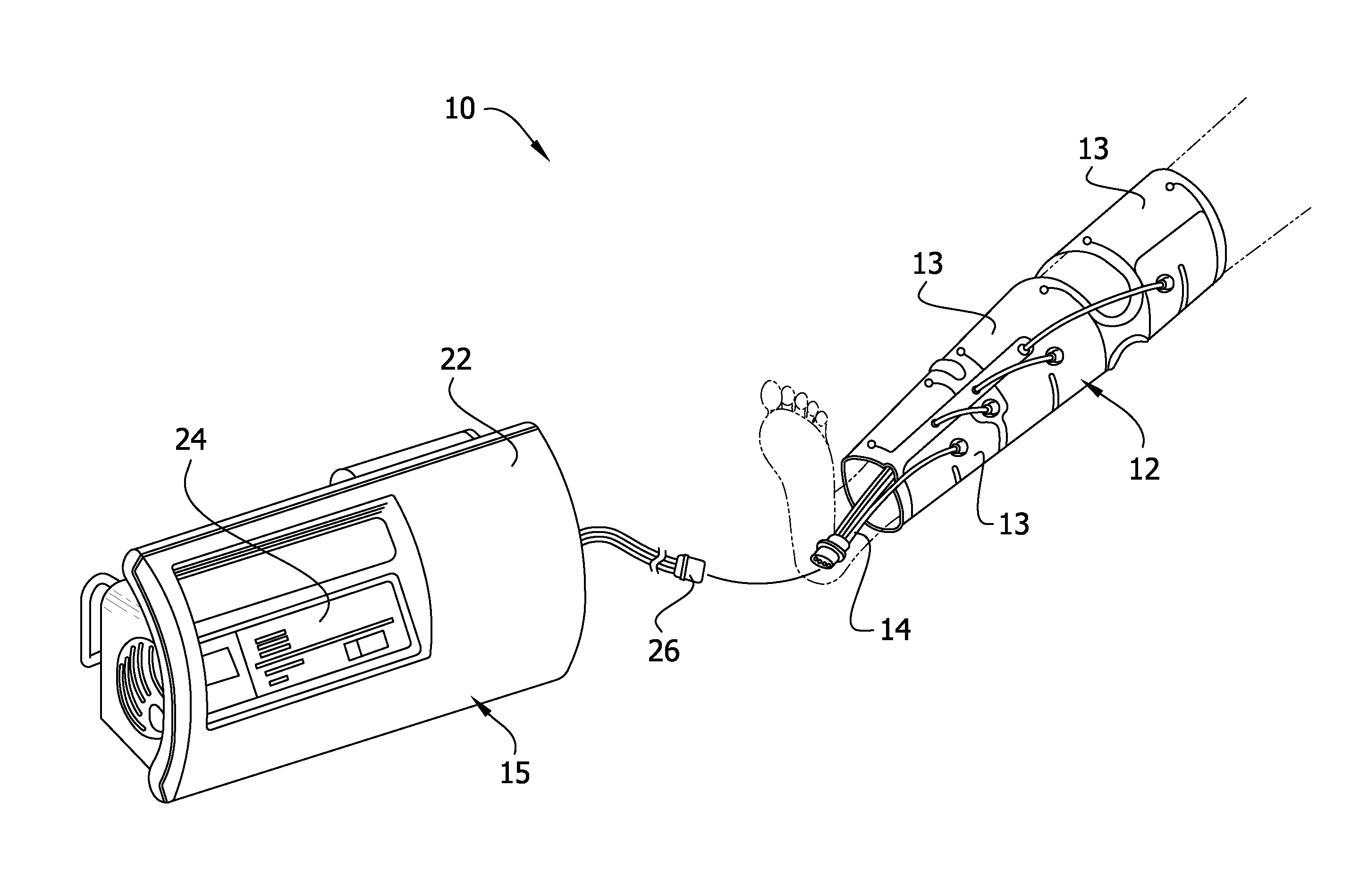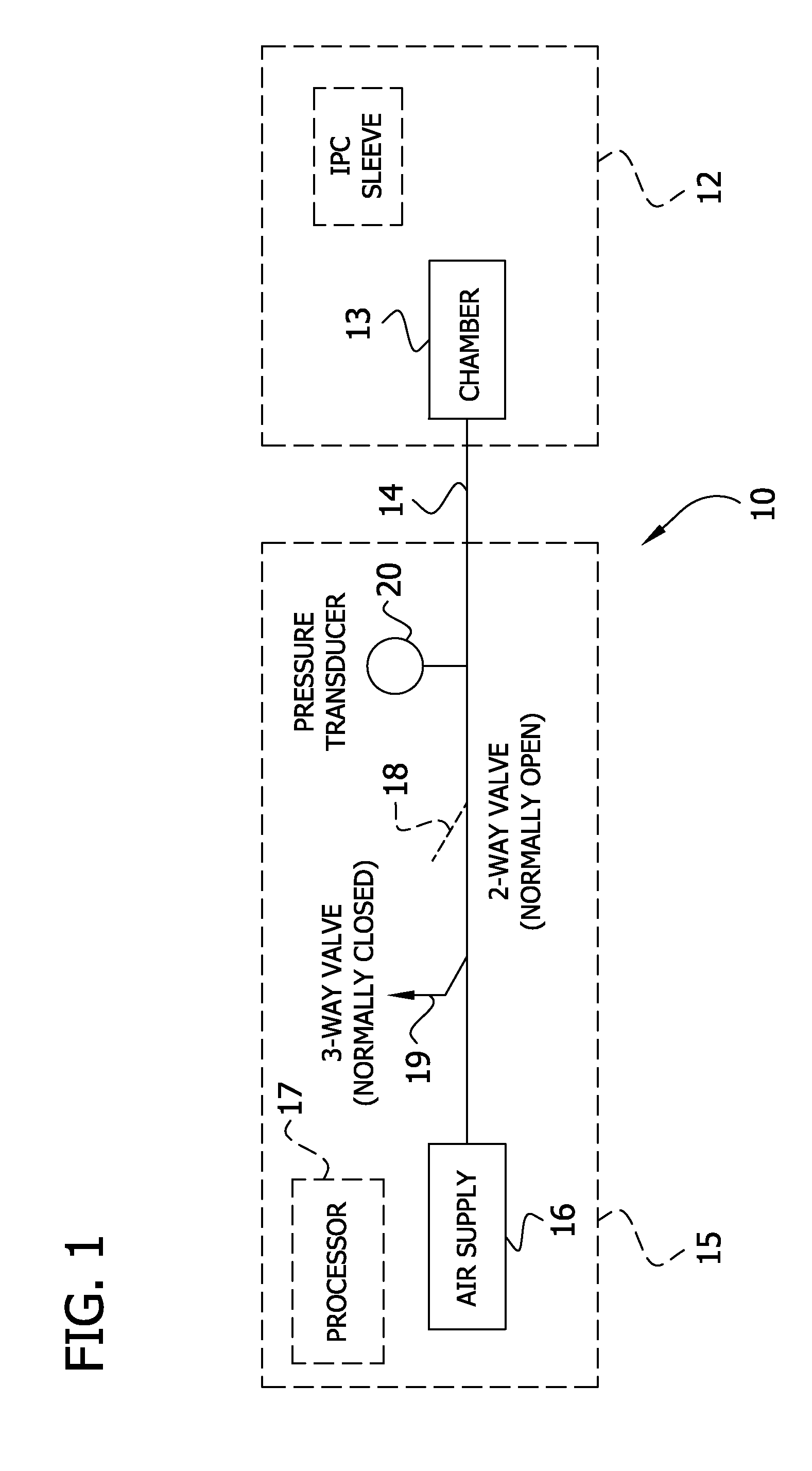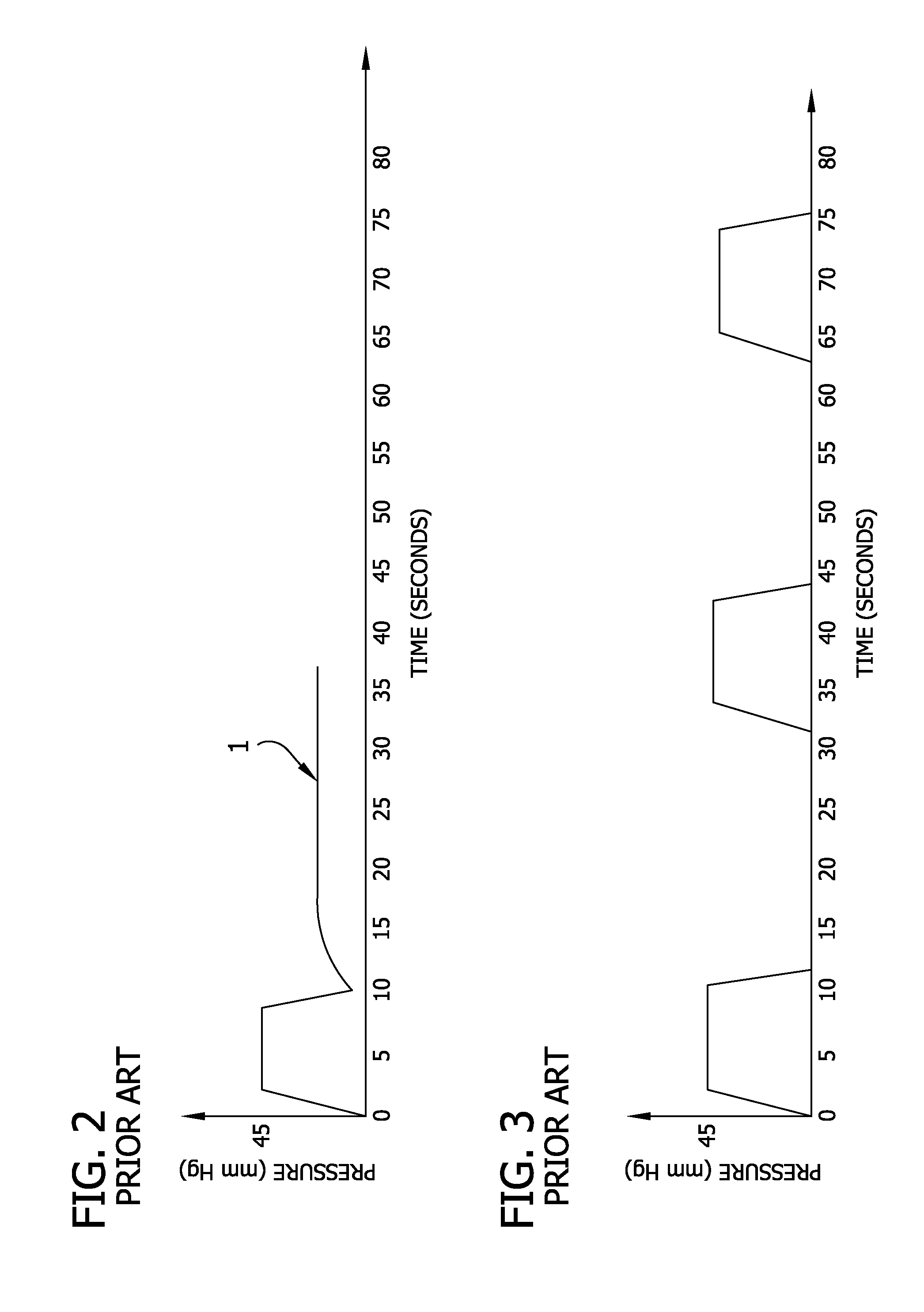Venous Augmentation System
a technology of venous augmentation and stent, which is applied in the field of venous augmentation systems, can solve the problems of thrombosis formation and inherent shortcomings, and achieve the effect of reducing pressure in the chamber and facilitating blood flow
- Summary
- Abstract
- Description
- Claims
- Application Information
AI Technical Summary
Benefits of technology
Problems solved by technology
Method used
Image
Examples
Embodiment Construction
[0017]With reference to the figures, FIG. 1 in particular illustrates a pneumatic circuit in association with an intermittent pneumatic compression (IPC) device 10 to determine venous refill time according to the present invention. In the IPC device 10, a compression sleeve 12 having a single chamber 13 is connected, for example, via tubing 14, to a controller 15 having a processor 17 operatively connected to an air supply 16 (e.g., a compressor) which provides compressed air to the chamber of the sleeve. A two-way normally open valve 18 and a three-way normally closed valve 19 are provided between the sleeve 12 and the air supply 16. A pressure transducer 20 downstream of the valve 18 monitors the pressure in the chamber. The sleeve 12 can have two or more chambers without departing from the scope of the invention. For example, the sleeve 12 shown in FIG. 6 has three chambers 13.
[0018]The sleeve 12 is configured to be wrapped around a patient's extremity (e.g., leg) (FIG. 6). To pr...
PUM
 Login to View More
Login to View More Abstract
Description
Claims
Application Information
 Login to View More
Login to View More - R&D
- Intellectual Property
- Life Sciences
- Materials
- Tech Scout
- Unparalleled Data Quality
- Higher Quality Content
- 60% Fewer Hallucinations
Browse by: Latest US Patents, China's latest patents, Technical Efficacy Thesaurus, Application Domain, Technology Topic, Popular Technical Reports.
© 2025 PatSnap. All rights reserved.Legal|Privacy policy|Modern Slavery Act Transparency Statement|Sitemap|About US| Contact US: help@patsnap.com



